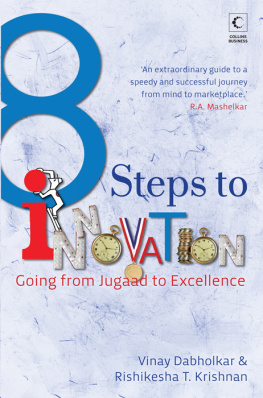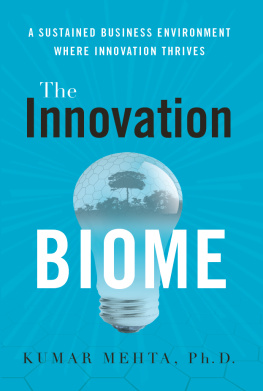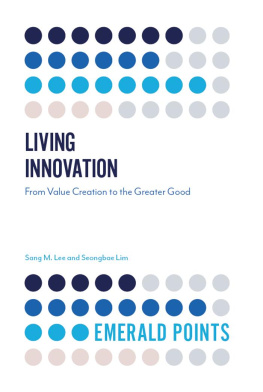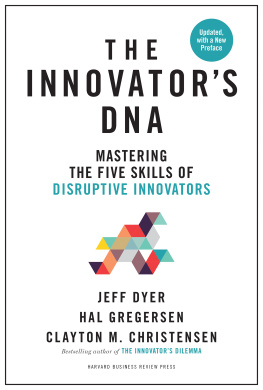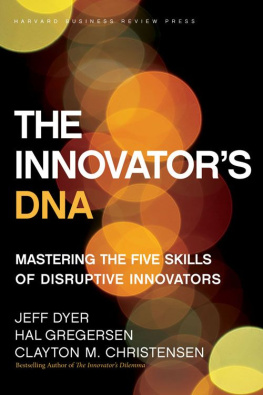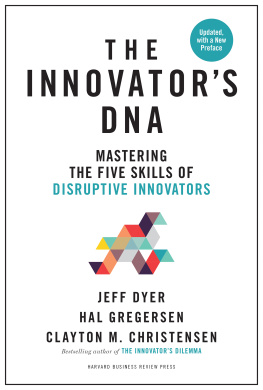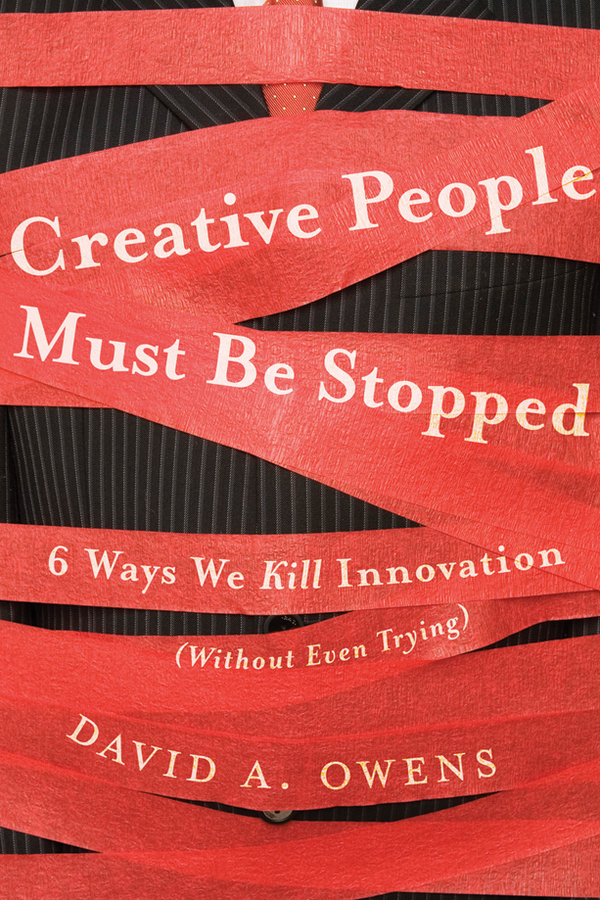Contents
Praise for Creative People Must Be Stopped
Read Creative People Must Be Stopped only if you are serious about making stuff, and making stuff happen. This is a survival guide for navigating a world that is dangerous for good ideas. And it is required reading for the creative people who love them!
Peter Durand, founder, The Center for Graphic Facilitation, and creative director, Alphachimp Studio Inc.
This is no rarefied academic treatment on innovation as an abstract ideal, but a nuts-and-bolts handbook to dissecting our thought patterns about innovation. Owens dispels the myth that innovation is a binary trait that either exists or does not in a given product, process, or business model. Creative People Must Be Stopped addresses the myriad ways that novel ideas can fail in the marketplace. Working through a combination of thought experiments and real-world examples, the book demonstrates how failures in understanding the context for innovation can prove every bit as deadly to progress as failures of imagination.
Mark Rowan, president, Griffin Technology Inc., maker of iPod, iPhone, and iPad accessories
Creative People Must Be Stopped is among the best books ever written about human imagination in the workplace. David Owens is a master innovator, having practiced his craft as a product designer, researcher, teacher, creativity coach, and executive. The breadth and depth of his experience fills every page of this little gem, which is chock-full of hundreds of big and little steps that you can take right now to do more creative work and to lead more innovative teams and organizations.
Robert Sutton, professor, Stanford University, and author of the New York Times bestseller Good Boss, Bad Boss

Copyright 2012 by David A. Owens. All rights reserved.
Published by Jossey-Bass
A Wiley Imprint
989 Market Street, San Francisco, CA 94103-1741 www.josseybass.com
No part of this publication may be reproduced, stored in a retrieval system, or transmitted in any form or by any means, electronic, mechanical, photocopying, recording, scanning, or otherwise, except as permitted under Section 107 or 108 of the 1976 United States Copyright Act, without either the prior written permission of the publisher, or authorization through payment of the appropriate per-copy fee to the Copyright Clearance Center, Inc., 222 Rosewood Drive, Danvers, MA 01923, 978-750-8400, fax 978-646-8600, or on the Web at www.copyright.com . Requests to the publisher for permission should be addressed to the Permissions Department, John Wiley & Sons, Inc., 111 River Street, Hoboken, NJ 07030, 201-748-6011, fax 201-748-6008, or online at www.wiley.com/go/permissions .
Readers should be aware that Internet Web sites offered as citations and/or sources for further information may have changed or disappeared between the time this was written and when it is read.
Limit of Liability/Disclaimer of Warranty: While the publisher and author have used their best efforts in preparing this book, they make no representations or warranties with respect to the accuracy or completeness of the contents of this book and specifically disclaim any implied warranties of merchantability or fitness for a particular purpose. No warranty may be created or extended by sales representatives or written sales materials. The advice and strategies contained herein may not be suitable for your situation. You should consult with a professional where appropriate. Neither the publisher nor author shall be liable for any loss of profit or any other commercial damages, including but not limited to special, incidental, consequential, or other damages.
Jossey-Bass books and products are available through most bookstores. To contact Jossey-Bass directly call our Customer Care Department within the U.S. at 800-956-7739, outside the U.S. at 317-572-3986, or fax 317-572-4002.
Jossey-Bass also publishes its books in a variety of electronic formats. Some content that appears in print may not be available in electronic books.
Library of Congress Cataloging-in-Publication Data
Owens, David A.
Creative people must be stopped: six ways we kill innovation (without even trying) / David A. Owens.1st ed.
p. cm.
Includes bibliographical references and index.
ISBN 978-1-118-00290-2 (hardback); ISBN 978-1-118-12900-5 (ebk); ISBN 978-1-118-12901-2 (ebk); ISBN 978-1-118-12902-9 (ebk)
1. Creative ability in business. 2. Organizational change. I. Title.
HD53.O94 2012
658.4063dc23 2011032504
This book is dedicated to my lovely ladies, Jennifer, Charlotte, and Adelaide
Introduction
Creative People Must Be Stopped!
Given that a search on the term innovation returns more than forty thousand book entries on Amazon.com , does the world really need another book on the topic? Maybe the better question is Why do so many organizations continue to kill good ideas and fail in their innovation attempts despite this wealth of research and advice?
Innovation is a natural and desirable outcome of human interaction, yet it is systematically stopped in organizations, often by the very people who say they want it and who stand to benefit from it. I term these systematic stoppages innovation constraints .
Over the course of ten years of research, teaching, and consulting, I have identified the six dominant types of constraints that can keep creative new ideas from being formulated, developed into marketable products and services, or adopted by the intended users. This book organizes these innovation killers into a conceptual framework that demystifies what innovation is, how it happens, and how we stop it without even trying. In my executive programs, workshops, talks, and consulting engagements, thousands of managers, executives, and innovators have successfully used the framework to diagnose the primary causes of innovation failure in their organizations and to develop strategies for overcoming them. My goal in this book is to bring this power of understanding, diagnosing, and removing constraints on innovation to many, many more.
Although this book relies on academic research in a variety of disciplines to help explain why things happen the way they do, it is above all a practical guide to a new way of thinking about innovation, complete with diagnostic and other tools, as well as suggestions for action. It is not, however, a laundry list of Do this, dont do that advice. Rather, this book is aimed at giving aspiring innovators and managers of innovation the conceptual and practical basis they need to develop their own actionable insights and smart strategies for responding to the challenges of coming up with exciting new ideas and bringing them to fruition.
CHAPTER 1
The Context of Innovation
Why Everyone Wants Innovation but No One Wants to Change
Figure 1.1

Our firm was in a bit of a slump. We had a hugely successful product a few years ago, but now we were facing increasing pressure to come up with the follow-up product, the next big thing. One day the big boss called the team into the office and said,
People, this is serious. It has got to be big! Look, I really need you to think outside the boxdont constrain yourselves! Listen, I really want you to push the boundaries way out there on this one; remember, were talking blue-sky this timea real breakthrough!


